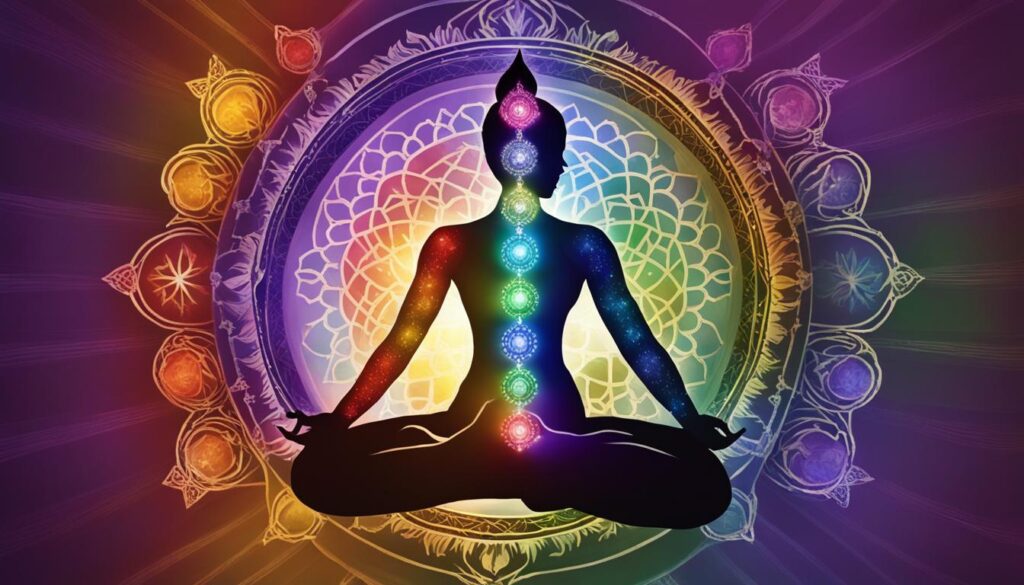Chakras have been a subject of debate and controversy, with some individuals expressing skepticism and doubts about their existence and effectiveness. But why do people say chakras are bad? Let’s delve into common criticisms and debunk some myths surrounding chakras.
Key Takeaways:
- Chakras face skepticism due to the lack of scientific proof of their existence.
- There is no unified theory of the chakras, leading to conflicting information about their characteristics.
- The discrepancies in teachings and experiences raise questions about the authenticity of chakras.
- Despite uncertainties, many find value in working with chakras for personal growth and self-improvement.
- Approach the topic of chakras with humility, recognizing that experiences and interpretations may vary.
The Misconceptions About Chakras
In today’s culture, the concept of chakras has been misinterpreted, diluted, and commercialized, leading to widespread misconceptions about their true nature and purpose. One common misconception is that chakras are solely physical entities, which undermines their profound spiritual significance.
Many people believe that imbalances or blockages in the chakras are the root cause of diseases, leading to various practices aimed at healing and rebalancing these energy centers. However, it is essential to understand that chakras are not the direct cause of physical ailments but rather represent a deeper energetic imbalance that may manifest in physical symptoms.
Furthermore, the focus on external measures, such as gemstones, herbs, and vibrational therapies, often overshadows the traditional internal practices of mantra, pranayama, and meditation. While these external tools can be used as aids in chakra work, they should not be mistaken as the primary means of opening and aligning the chakras.
Psychic healers and energy workers claim to manipulate the chakras to induce healing and higher states of consciousness. However, it is essential to approach these claims with skepticism as they often lack scientific evidence and can be based on subjective experiences and beliefs.
The true purpose of opening the chakras is not to gain physical healing or supernatural powers, as some may believe. Instead, it is a part of the spiritual journey towards self-realization and expanding one’s consciousness. By accessing and balancing the chakras, individuals can cultivate a greater sense of inner harmony, self-awareness, and connection to the divine.
| Common Misconceptions | Reality |
|---|---|
| Chakras are solely physical entities. | Chakras are energetic centers with profound spiritual significance. |
| Imbalances in chakras cause diseases. | Chakras represent deeper energetic imbalances that may manifest in physical symptoms. |
| External measures like gemstones and herbs are the primary means of opening the chakras. | Internal practices of mantra, pranayama, and meditation are the traditional means of chakra work. |
| Psychic healers can manipulate the chakras to induce healing. | The claims of psychic healers lack scientific evidence and should be approached with skepticism. |
| Opening the chakras leads to physical healing and occult powers. | The purpose of opening the chakras is spiritual growth, self-realization, and inner harmony. |
Understanding the Role of Chakras in Yoga
In traditional yogic literature, chakras are understood as vital centers in the subtle or astral body, going beyond mere physical entities. The opening and activation of these chakras require a radical shift in consciousness, often achieved through years of meditation and spiritual practice. By accessing higher states of consciousness, individuals gain awareness of the Supreme Self, surpassing the limitations of the physical body and mind.
Yoga practices, such as mantra, pranayama, and meditation, aim to open the chakras as a means to self-knowledge. While the chakras are not directly responsible for physical functions and healing, they are associated with cosmic elements and activities. The signs of opened chakras include control over and detachment from the physical elements and organs, signifying a deeper understanding of the universal nature of these elements.

| Chakra | Associated Element | Location |
|---|---|---|
| Root Chakra | Earth | Base of the spine |
| Sacral Chakra | Water | Lower abdomen |
| Solar Plexus Chakra | Fire | Upper abdomen |
| Heart Chakra | Air | Center of the chest |
| Throat Chakra | Sound/Ether | Base of the throat |
| Third Eye Chakra | Light | Center of the forehead |
| Crown Chakra | Thought/Consciousness | Top of the head |
Conclusion
The concept of chakras has long been accompanied by skepticism and doubts, primarily due to the lack of scientific evidence and the conflicting information surrounding their nature and functions. The shape, color, and location of chakras vary across different sources, further challenging the understanding of these energy centers.
Despite the uncertainties, many individuals still find value in working with chakras for personal growth and spiritual development. It is important to approach the teachings of chakras with humility and respect, recognizing that different people may have different experiences and interpretations. Whether or not chakras are ultimately proven to be a myth, they can serve as useful tools for understanding our needs as human beings and establishing a deeper connection with ourselves.
While the challenges to the concept of chakras persist, it is essential to acknowledge that the value of these energy centers goes beyond scientific validation. Chakras offer a framework for exploring our inner selves and cultivating self-awareness. Whether approached from a spiritual or psychological perspective, the exploration of chakras can provide insights and support our individual journey towards self-discovery.
FAQ
Why do people say chakras are bad?
Some individuals voice concerns and skepticism about chakras, questioning their existence and effectiveness. The lack of scientific proof of chakras’ existence adds to the doubts surrounding them. Additionally, the concept of chakras has been misinterpreted, diluted, and commercialized in today’s culture, leading to negative beliefs about them.
What are some common criticisms of chakras?
Common criticisms of chakras include the lack of a unified theory, with different sources providing conflicting information about their shape, color, location, and other characteristics. The discrepancies in the teachings and experiences of experts who claim to see and feel the chakras raise questions about their authenticity. Furthermore, the focus on external measures, such as gemstones and vibrational therapies, has overshadowed the traditional internal practices of mantra, pranayama, and meditation.
How can we debunk misconceptions about chakras?
To debunk misconceptions about chakras, it is important to approach their teachings with humility and respect, recognizing that different individuals may have different experiences and interpretations. While there may not be a consensus regarding their shape, color, or location, many individuals find value in working with chakras for personal growth and spiritual development.
What is the role of chakras in yoga?
In yoga, the chakras are viewed as vital centers in the subtle or astral body, rather than solely physical entities. The opening and activation of the chakras require a radical shift in consciousness, which is often achieved through years of meditation and spiritual practice. The chakras provide access to higher states of consciousness and awareness of the Supreme Self, going beyond the limitations of the physical body and mind.
Are chakras responsible for physical healing?
Chakras are not directly responsible for physical functions and healing but are associated with cosmic elements and activities. Some people believe that imbalances or blockages in the chakras are the root cause of diseases, leading to various practices aimed at healing the chakras. However, the true purpose of opening the chakras is not for physical healing or gaining occult powers, but as a part of the spiritual journey towards self-realization.
Should we dismiss or explore the concept of chakras?
While skepticism and doubts around chakras are rooted in the lack of scientific evidence and the conflicting information about their nature and functions, they can still serve as useful tools for understanding our needs as human beings and connecting with a deeper sense of self. It’s important to approach the teachings of chakras with an open mind and recognize that their value may lie in personal growth and self-improvement, regardless of whether they are ultimately proven to be a myth or not.




